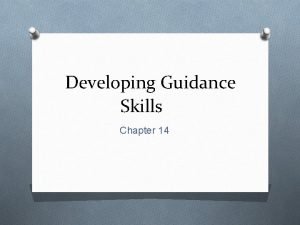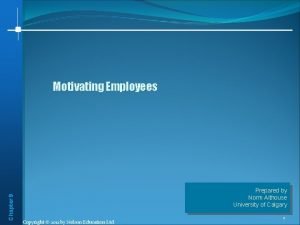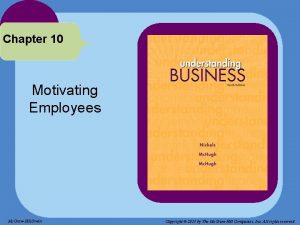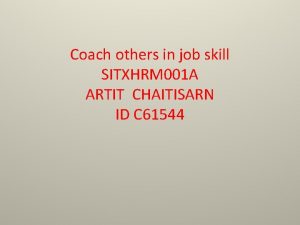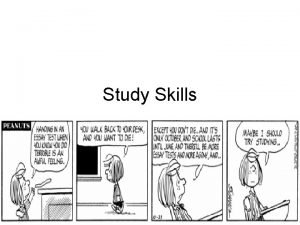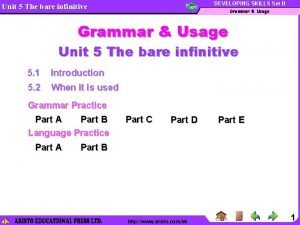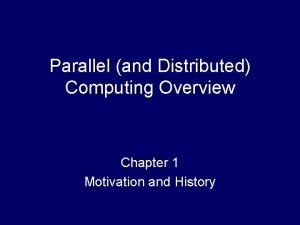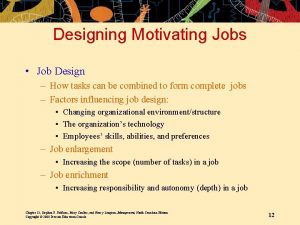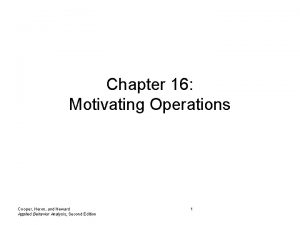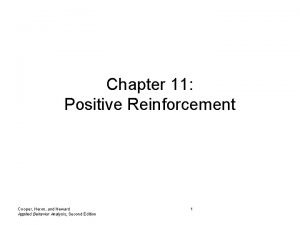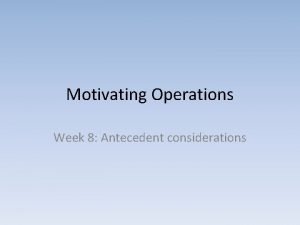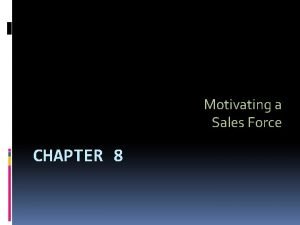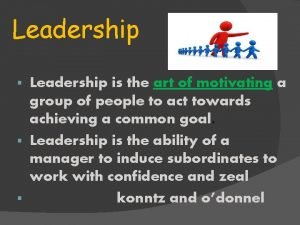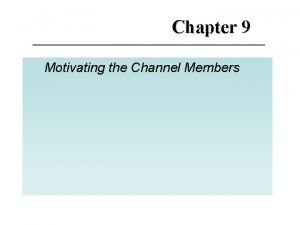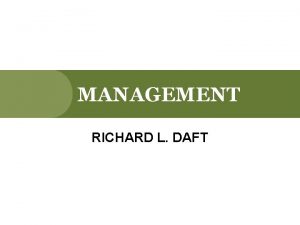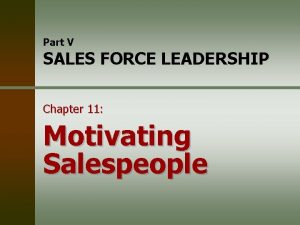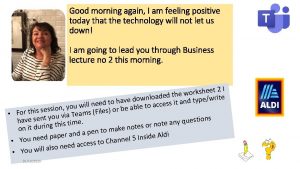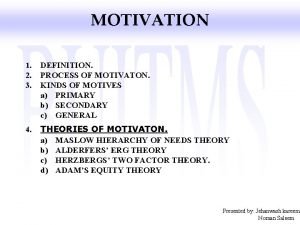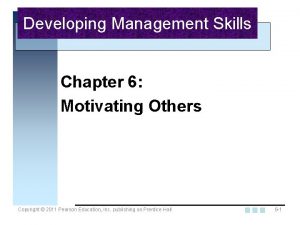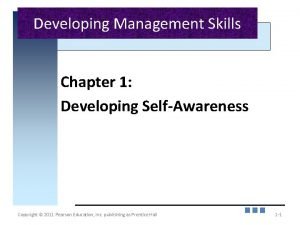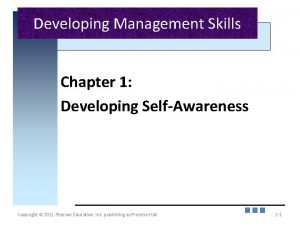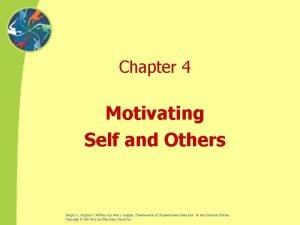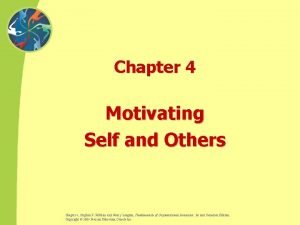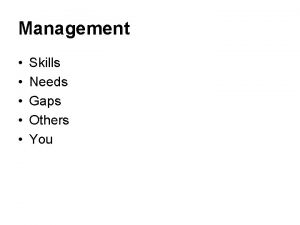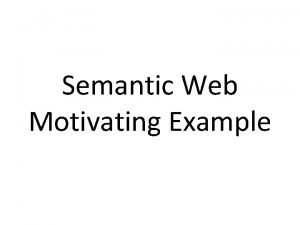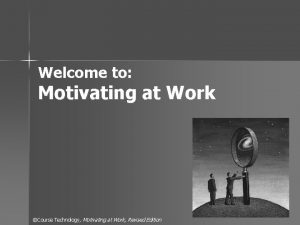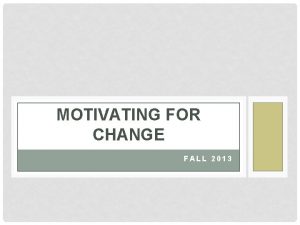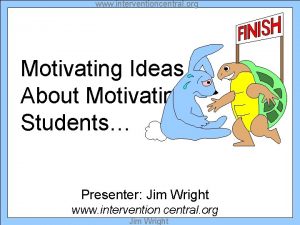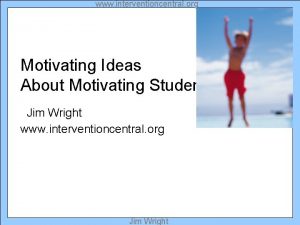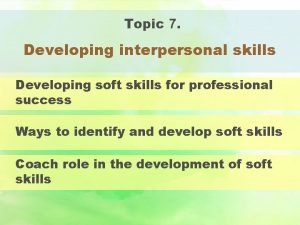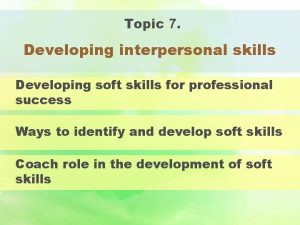Developing Management Skills Chapter 6 Motivating Others Copyright






































- Slides: 38

Developing Management Skills Chapter 6: Motivating Others Copyright © 2016 Pearson Education, Inc. 6 -1

Learning Objectives 1. Diagnose work performance problems 2. Enhance the work-related abilities of others 3. Foster a motivating work environment Copyright © 2016 Pearson Education, Inc. 6 -2

Motivation “I don’t motivate my players. You cannot motivate someone, all you can do is provide a motivating environment and the players will motivate themselves. ” Phil Jackson (after winning his 7 th NBA title as a coach) Copyright © 2016 Pearson Education, Inc. 6 -3

Motivation “Spending time and energy trying to ‘motivate’ people is a waste of effort. The real question is not, ‘How do we motivate our people? ’ If you have the right people, they will be self-motivated. They key is to not de-motivate them. ” Jim Collins, Good to Great Copyright © 2016 Pearson Education, Inc. 6 -4

Formula for Performance = Ability x Motivation (Effort) Ability = Aptitude x Training x Resources Motivation = Desire x Commitment Copyright © 2016 Pearson Education, Inc. 6 -5

Diagnosing Poor Performance • How difficult are the tasks? • How capable is the individual? • How hard is individual trying to succeed at the job? • How much improvement is individual making? Copyright © 2016 Pearson Education, Inc. 6 -6

Performance and Motivation Is the problem Ability or Motivation? Copyright © 2016 Pearson Education, Inc. 6 -7

Three Danger Signals of Ability Degeneration 1. Taking refuge in a specialty 2. Focusing on past performance 3. Exaggerating aspects of the leadership role Copyright © 2016 Pearson Education, Inc. 6 -8

Five Tools for Improving Ability 1. 2. 3. 4. 5. Resupply Retrain Refit Reassign Release Copyright © 2016 Pearson Education, Inc. 6 -9

Management Styles Theory X: Assumes that people seek to avoid work and responsibility when possible Theory Y: Assumes that people have an intrinsic desire to do good work Copyright © 2016 Pearson Education, Inc. 6 -10

Relationship Between Satisfaction and Performance Copyright © 2016 Pearson Education, Inc. 6 -11

Four Types 1. Indulging: focuses on satisfaction rather than performance 2. Imposing: focuses on performance rather than satisfaction 3. Ignoring: focuses on neither performance nor satisfaction 4. Integrating: focuses equally on performance and satisfaction Copyright © 2016 Pearson Education, Inc. 6 -12

Old View of Motivation Satisfaction → Motivation → Performance Copyright © 2016 Pearson Education, Inc. 6 -13

New View of Motivation → Performance → Outcomes → Satisfaction Copyright © 2016 Pearson Education, Inc. 6 -14

Motivation → Performance Motivation begins with establishing moderately difficult goals that are understood and accepted. Copyright © 2016 Pearson Education, Inc. 6 -15

Goal Setting • Characteristics of good goals: – – Copyright © 2016 Pearson Education, Inc. Specific Consistent Appropriately challenging Provide feedback 6 -16

Motivation → Performance After setting goals, managers should remove obstacles to performance. Copyright © 2016 Pearson Education, Inc. 6 -17

Path Goal Theory Insert figure 6. 2 Copyright © 2016 Pearson Education, Inc. 6 -18

Performance → Outcomes Using rewards and discipline to encourage exceptional behaviors and extinguish unacceptable behavior Copyright © 2016 Pearson Education, Inc. 6 -19

The Best Award Programs • Give awards publicly • Use awards infrequently • Embed them in a credible reward process • Acknowledge past recipients in awards presentations • Match award with culture Copyright © 2016 Pearson Education, Inc. 6 -20

Managers’ Actions as Reinforcers Managers get what they reinforce, not what they want Copyright © 2016 Pearson Education, Inc. 6 -21

Behavior Shaping Strategies Copyright © 2016 Pearson Education, Inc. 6 -22

Management Tool Strategies Disciplining: responding negatively to behavior to discourage future occurrences Rewarding: linking desired behaviors with employee-valued outcomes Copyright © 2016 Pearson Education, Inc. 6 -23

Motivation → Performance (cont’d) Extrinsic Outcomes: outside the control of the individual Intrinsic Outcomes: experienced by the individual as a result of successful performance Copyright © 2016 Pearson Education, Inc. 6 -24

Work Design The process of matching job characteristics and the worker’s skill and interests. Copyright © 2016 Pearson Education, Inc. 6 -25

Job Characteristics Model Insert figure 6. 4 Copyright © 2016 Pearson Education, Inc. 6 -26

Work Design Strategies • Combine tasks • Form identifiable work units • Establish client relationships • Increase authority • Open feedback channels Copyright © 2016 Pearson Education, Inc. 6 -27

Need Theories Copyright © 2016 Pearson Education, Inc. 6 -28

Murray’s Manifest Needs Need for Achievement: behavior toward competition with a standard of excellence Need for Affiliation: desire to feel reassured and acceptable to others Need for Power: desire to influence others and to control one’s environment Copyright © 2016 Pearson Education, Inc. 6 -29

Needs and Attribution Common Management Mistakes – Assuming all employees value the same reward – Assuming the manager’s preference for a reward is the same as employees Copyright © 2016 Pearson Education, Inc. 6 -30

Cafeteria Style Systems Allows employees to select from a “menu” of benefits, i. e. health benefits, insurance, etc. Copyright © 2016 Pearson Education, Inc. 6 -31

Fairness and Equity Workers evaluate what they get from the relationship (outcomes) to what they put in (inputs) and compare this ratio to other’s in a comparison group. Copyright © 2016 Pearson Education, Inc. 6 -32

Fairness and Equity Workers who perceive inequity are motivated to adjust their own or other worker’s inputs and/or outcomes. Copyright © 2016 Pearson Education, Inc. 6 -33

Feedback To make the connection between behavior and outcome, consider 1) The length of time between behavior and rewards 2) The explanation (feedback) for the reward Copyright © 2016 Pearson Education, Inc. 6 -34

Integrative Model Copyright © 2016 Pearson Education, Inc. 6 -35

Behavioral Guidelines • • Clearly define an acceptable level of performance or specific goals Remove obstacles to reaching goals Make rewards contingent on performance Treat discipline as a learning experience for the individual Copyright © 2016 Pearson Education, Inc. 6 -36

Behavioral Guidelines • • Transform acceptable behaviors into exceptional ones Identify rewards that appeal to the individual Check subordinates perceptions of reward equity Provide timely rewards and feedback Copyright © 2016 Pearson Education, Inc. 6 -37

Copyright Information Copyright © 2016 Pearson Education, Inc. 6 -38
 Motivating yourself and others
Motivating yourself and others Guidance skills definition
Guidance skills definition Chapter 18 preparing for the world of work
Chapter 18 preparing for the world of work Chapter 10 motivating and satisfying employees and teams
Chapter 10 motivating and satisfying employees and teams Is the individual internal process that energizes directs
Is the individual internal process that energizes directs Chapter 10 motivating employees
Chapter 10 motivating employees Chapter 10 motivating employees
Chapter 10 motivating employees Chapter 10 motivating employees
Chapter 10 motivating employees Sitxhrm001
Sitxhrm001 What is the purpose of direct and indirect guidance
What is the purpose of direct and indirect guidance Developing effective study habits
Developing effective study habits Aristo grammar and usage (set b answer)
Aristo grammar and usage (set b answer) Ineffictive
Ineffictive Developing facilitation skills
Developing facilitation skills Motivating parallelism
Motivating parallelism How to motivate esl students
How to motivate esl students Language focus
Language focus Designing motivating jobs
Designing motivating jobs Conditioned motivating operations examples
Conditioned motivating operations examples Cooper heron heward
Cooper heron heward Motivating operations definition
Motivating operations definition Motivating sales force
Motivating sales force Communating
Communating Channel motivation meaning
Channel motivation meaning Planning organizing motivating staffing
Planning organizing motivating staffing Motivation for software developers
Motivation for software developers Motivating employees without money
Motivating employees without money Motivating and satisfying employees and teams
Motivating and satisfying employees and teams Introduction to parallel computing ananth grama
Introduction to parallel computing ananth grama John cabot motivation
John cabot motivation Motivating people for total quality
Motivating people for total quality Motivating sales force
Motivating sales force Example of cmo-r
Example of cmo-r Good morning again
Good morning again Motivating parallelism
Motivating parallelism Primary motivating factor
Primary motivating factor Leading and motivating a team
Leading and motivating a team Planning organizing leading and controlling
Planning organizing leading and controlling Motivating example
Motivating example

